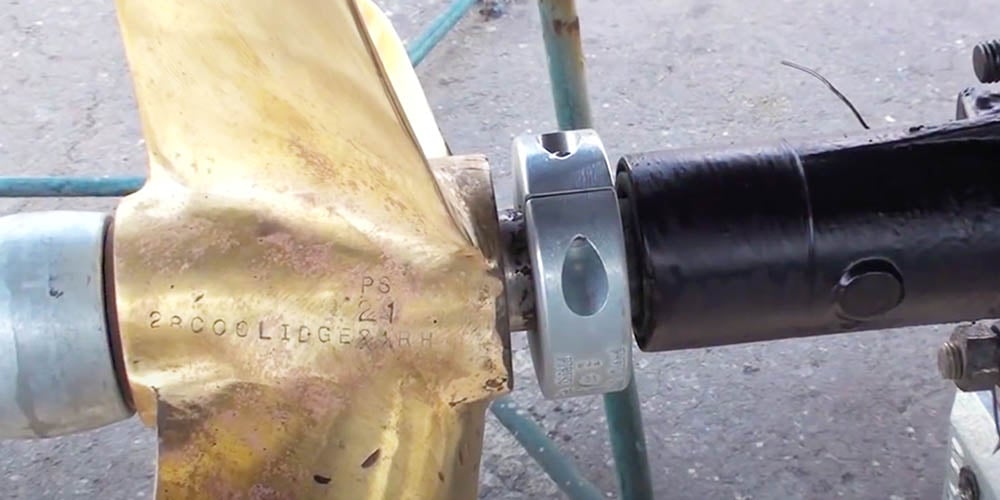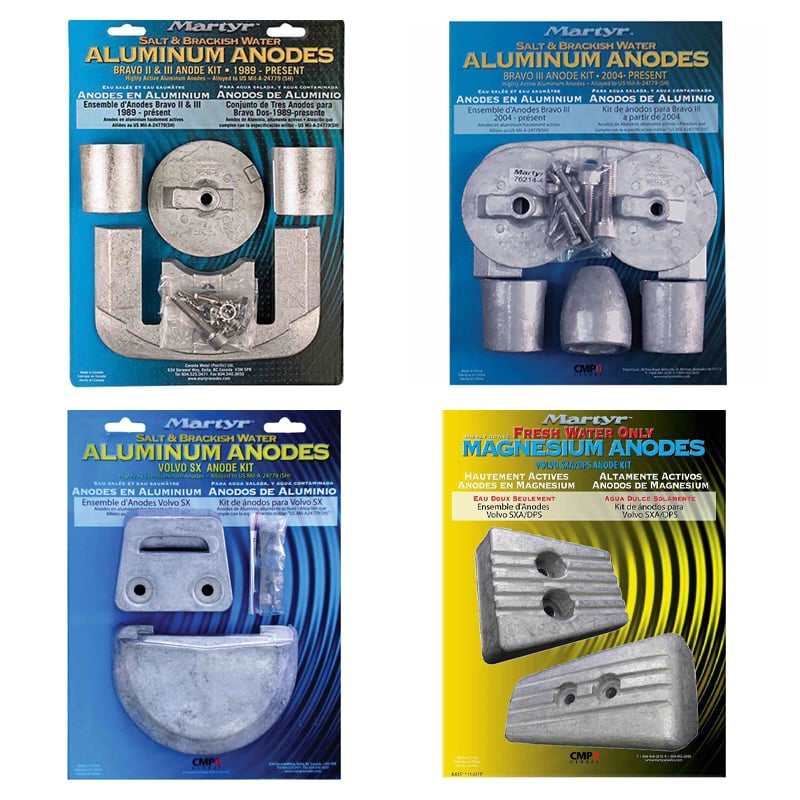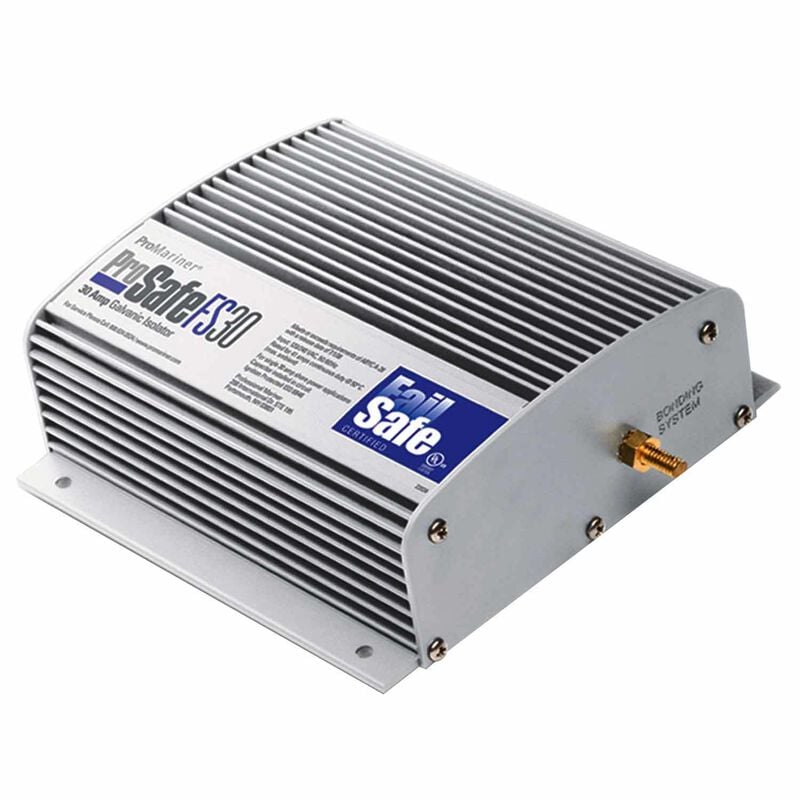
George and Lois had been looking forward to a relaxing day on the water. But as they stepped onto their boat and glanced at the outdrive, their excitement turned to shock. The once-smooth aluminum casing was pitted and crumbling—galvanic corrosion had eaten it away. Two months had passed since they last checked their anodes, and now they were paying the price. Their day on the water was over before it even began.
- What is Galvanic Corrosion?
- How do You Prevent Galvanic Corrosion?
- Typical Targets of Galvanic Corrosion
- Why Are Sacrificial Anodes Made of Zinc, Aluminum or Magnesium?
- Which Anode Material is Right for Your Boat?
- Types of Anodes
- Sterndrive Anode Kits
- When Should You Replace Your Boat's Anodes?
- Galvanic Isolators: Extra Protection Against Stray Current Corrosion
- Conclusion
- We're Here to Help!
- Galvanic Corrosion and Boat Anode FAQs
- Related Articles
What is Galvanic Corrosion?
Galvanic corrosion occurs when two different metals, connected electrically and submerged in an electrolyte like saltwater, form a galvanic cell. This generates a current that gradually deteriorates the more reactive (less noble) metal, known as the anode. Left unchecked, this electrochemical process can cause serious damage to key components like propellers, shafts, and outdrives.
How Do You Prevent Galvanic Corrosion?
The best defense against galvanic corrosion is sacrificial anodes. These specially designed anodes, made from highly active metals, corrode first—essentially sacrificing themselves to protect your boat's vital components. Without them, the corrosion process will target your propeller, outdrive, or hull fittings instead. Regular inspections and timely replacements are the key to keeping your boat protected.
Typical Targets of Galvanic Corrosion
Here are some examples of boat components that can corrode due to galvanic reactions:
- Propellers: Whether aluminum or bronze, props are at risk when exposed to dissimilar metals. Corroded props may develop pitting and brittleness, eventually leading to failure.
- Shafts: Bronze propeller shafts can corrode when in contact with stainless steel, especially without proper anode protection. Early signs include a reddish discoloration, progressing to pitting and structural weakening.
- Outboards and Outdrives: Aluminum lower units can suffer severe damage if left unprotected. Pitting near stainless steel fasteners or a stainless-steel propeller can be an early warning sign. If ignored, galvanic corrosion can destroy the entire unit.
Why Are Sacrificial Anodes Made of Zinc, Aluminum or Magnesium?
The answer lies in the galvanic series—a ranking of metals from most noble (least likely to corrode) to least noble (most likely to corrode) when immersed in seawater. The list below ranks metals commonly found on boats according to their relative position within the series.
- Titanium (Most noble, least active)
- Stainless Steel (Passive)
- Nickel
- Copper
- Bronze
- Brass
- Silicon Bronze
- Lead
- Stainless Steel (Active—Scratched or welded areas)
- Cast Iron
- Mild Steel/Carbon Steel
- Aluminum
- Zinc
- Magnesium (Least noble, most active)
As the most active (least noble) metals in relation to the other metals in the list, Magnesium, Zinc and Aluminum act as sacrificial anodes by corroding first, thereby protecting the more noble metals on your boat from galvanic corrosion. Their high reactivity ensures they deteriorate instead of essential components like propellers, shafts, and outdrives, extending the lifespan of these parts.
Which Anode Material is Right For Your Boat?
| Material | Saltwater | Brackish Water | Freshwater |
|---|---|---|---|
| Zinc | √ | ||
| Aluminum | √ | √ | |
| Magnesium | √ |
Different anode materials are best suited for specific water conditions:
- Zinc: This is a traditional anode material that works well in saltwater. However, since traditional zinc anodes contain cadmium, a substance of environmental concern, boaters should consider using aluminum anodes instead.
- Aluminum: Aluminum anodes work well in both saltwater and brackish water. They last longer than zinc anodes, provide excellent protection and do not contain cadmium, which as mentioned, is a substance of environmental concern.
- Magnesium: Magnesium anodes are for freshwater only. Magnesium is highly active and offers strong protection in freshwater environments but corrodes too quickly in saltwater.
Types of Anodes
West Marine offers a variety of anodes designed for different applications:
Shop all engine and outboard anodes:
- Protect critical components such as the engine block, cooling system, outboard motors, and sterndrives.
- Common anode locations include the lower unit, cavitation plate, trim tab, and engine coolant passages.
- Available in zinc, aluminum, or magnesium.
Shop all hull and transom anodes:
- Mounted directly on the hull or transom to protect underwater metal components.
- Help prevent corrosion of through-hull fittings, stern brackets, and bonded metal parts.
- Typically large, flat anodes to provide broad protection.
Shop all propeller, shaft and collar anodes:
- Clamped around the propeller shaft or installed as propeller nut anodes.
- Protect the propeller, shaft, and couplings from galvanic corrosion.
- Shaft anodes are split for easy installation without removing the shaft.
Shop all rudder and trim tab anodes:
- Installed on rudders and trim tabs to prevent pitting and weakening due to corrosion.
- Small, disc- or bar-shaped anodes designed for secure mounting.
Shop all thruster anodes:
- Protect bow and stern thrusters from corrosion, ensuring reliable operation.
- Typically small, compact anodes installed on thruster housings or blades.
Sterndrive Anode Kits
 Clockwise from upper left: Bravo II/III, 1989-Present, Aluminum Anode Kit, Bravo III, 2004-Present, Aluminum Anode Kit, Volvo Penta™ DPS/ SX-A Drive Magnesium Anode Kit, Volvo Penta™ DPS/ SX-A Drive Magnesium Anode Kit.
Clockwise from upper left: Bravo II/III, 1989-Present, Aluminum Anode Kit, Bravo III, 2004-Present, Aluminum Anode Kit, Volvo Penta™ DPS/ SX-A Drive Magnesium Anode Kit, Volvo Penta™ DPS/ SX-A Drive Magnesium Anode Kit.Since most sterndrives require multiple different anodes, West Marine conveniently offers Sterndrive Anode Kits for brands like MerCruiser and Volvo Penta. Each kit includes a complete set of anodes and mounting hardware.
When Should You Replace Your Boat's Anodes?
Anodes should be replaced when about 50% eroded. Waiting too long can leave your boat’s metal parts unprotected, leading to costly repairs. Factors like polluted water, warm temperatures, and stray current corrosion can accelerate wear, making regular inspections essential.
Galvanic Isolators: Extra Protection Against Stray Current Corrosion
Even with sacrificial anodes, your boat may still be vulnerable to stray current corrosion—a different but equally damaging process caused by electrical leaks in marinas. A galvanic isolator blocks these low-voltage currents when your boat is plugged into shore power, reducing anode depletion and preventing corrosion. For maximum protection, an isolation transformer provides even greater protection by fully isolating your boats electrical system from the dock.
Conclusion
George and Lois learned the hard way that neglecting anodes can lead to serious damage—but you don’t have to make the same mistake. By regularly inspecting and replacing sacrificial anodes, you can protect your boat’s critical metal components and avoid expensive headaches. Whether you’re cruising in saltwater, brackish water, or freshwater, choosing the right anode material and staying ahead of corrosion will help keep your boat in top shape.
We're Here to Help!
Need the right anodes to protect your boat from galvanic corrosion? West Marine has you covered with a wide selection of zinc, aluminum, and magnesium anodes, plus everything else you need for great days on the water. Shop online or visit one of our 230+ stores. Use our store locator to find the nearest West Marine location!
Galvanic Corrosion and Boat Anode FAQs
What causes galvanic corrosion on a boat?
Galvanic corrosion happens when two different metals, connected electrically and submerged in an electrolyte like saltwater, create a galvanic cell. This results in one metal (the less noble one) corroding faster than usual.
How do sacrificial anodes protect my boat?
Sacrificial anodes, made of zinc, aluminum, or magnesium, corrode first, protecting other critical metal components like propellers, shafts, and outdrives from deterioration.
Which anode material should I use for my boat?
- Saltwater: Aluminum or zinc anodes
- Brackish water: Aluminum anodes
- Freshwater: Magnesium anodes
How often should I replace my anodes?
Anodes should be replaced when they are about 50% eroded. Regular inspections are essential, as factors like water pollution and stray electrical currents can accelerate corrosion.
How can I tell if my boat is experiencing galvanic corrosion?
Signs of galvanic corrosion include pitting on metal surfaces, a reddish or white powdery residue, and rapid deterioration of underwater metal components like propellers, shafts, or outdrives.
What’s the difference between a galvanic isolator and an isolation transformer?
A galvanic isolator blocks low-voltage DC currents that cause corrosion when your boat is plugged into shore power. An isolation transformer provides complete electrical separation from shore power, offering the highest level of protection.
